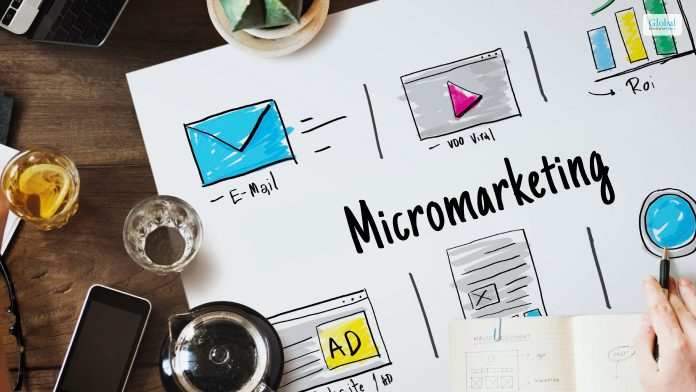Marketing Mix – What Are The 4 Ps Of Marketing?

Having the best product in the market never helps if the company fails to get the word into the market. Your target customers should have a good idea of what you offer so that the company is able to develop its brand in the marketplace. They must know what you are trying to offer. However, the strength of your marketing mix is the important thing that will enable you to achieve your marketing goals.
In this article, you will learn what a marketing mix is, its purpose, and how it works for different companies in different situations. In addition to that, we will also discuss how the marketing mix is performed with the help of the 4P structure, as well as the 7P structure. Finally, we will also discuss some other essential marketing tools. Hence, to find out more about the marketing mix read on through to the end of the article.
What Is A Marketing Mix?

According to Indeed.com,
“A marketing mix includes the tactics and tools you use to market your company’s offerings and influence customers to buy them. The best marketing mix is one that uses up-to-date market research and data-driven strategies to reach customers and drive sales.”
In some cases, to develop a marketing mix for your business, you might need to change your current marketing strategy. If your marketing mix is not in a continuous state of flux, you must be doing something wrong with your marketing strategy.
You will need to understand that just because something worked for the business to get more customers ten years ago, or even three years ago, might not work at the present time. Hence, you will need to consistently assess your target audience from time to time. Apart from that, you must also evaluate your marketing tools as well as the marketing plan you use for the execution of the marketing process.
In a comprehensive marketing plan, there are multiple areas of focus if one takes the marketing mix into consideration. In most cases, a company’s marketing mix is classified into 4Ps – product, placement, price, and promotion.
Read More: Market Orientation – What Is It, And How Does It Work?
Why Is Marketing Mix Important?
According to Investopedia,
“At its core, a marketing mix is focused on promoting a product or service to generate revenue for a company. On the whole, it integrates key marketing strategies that create brand awareness, build customer loyalty, and drive product sales.”
Rather than running through only one marketing message, effective marketing touches on various broad ranges. This helps the brand to reach a wider audience. Furthermore, with the help of the 4Ps of marketing, it becomes easier for marketing professionals to maintain more focus on the major things that matter.
It also gets easier for organizations to make more strategic decisions when they are launching a new product or revising an existing product.
What Are The 4Ps Of Marketing Mix?

The following are the four P classifications of the marketing mix strategy in business:
1. Product
This is the product or service that the business offers to satisfy the needs and demands of customers. To market the product, the company needs to determine what differentiates it from competing products.
2. Price
Here, the business needs to find out what the actual price of the product is and what the consumers are willing to pay based on the demands of the product in the market. Marketers also find out the costs based on R&D, manufacturing, marketing, and distribution so as to do cost-based pricing.
3. Placement
It is also important for marketers to find out the type of product they are trying to sell to the consumers. They need to determine whether they want to categorize the product in the basic or premium category.
4. Promotion
These include the forms of marketing practices the marketers are willing to employ to promote the product in the market. Here, the budget is one of the major factors to consider. In addition to that, marketing professionals also construct a message based on the previous three Ps as they try to reach their target consumers.
What Are The 7Ps Of Marketing Mix? (Three More Ps)

Here are the three more Ps that are also used in a business’s marketing mix:
5. People
People include the employees that are interacting directly with the consumers. In such cases, a business might consider showcasing a positive company culture, which becomes a part of their brand strategy. Many companies also include customer relationship management to increase customer loyalty.
6. Physical Evidence
Physical evidence might include the packaging of the product, as well as the structure and layout of the physical store. This is done to create a strong impression on the customers.
7. Process
Here, the marketers identify areas from the standpoint of logistics so as to ensure that customers are provided with a seamless experience of the product or service.
Other Helpful Marketing Tools
According to Investopedia,
“Not all marketing is product-focused. Customer service businesses are fundamentally different than those based primarily on physical products, so they often will take a consumer-centric approach that incorporates additional elements to address their unique needs.”
In addition to all the seven Ps, marketers also consider some other elements in their marketing strategies. Some of them include furniture, signage, and layout. In addition to that, marketers also study the needs and demands of customers (both present and future possibilities). To do this, they get feedback from customers and define the type of feedback.
Read More: Market Cannibalization – Definition, How Does It Work, Example, And More
Wrapping Up
The marketing mix is one of the most essential requirements for a brand if it wants to successfully promote its products and services in the marketplace. As per the strategy, companies make use of four Ps, namely, product, price, placement, and promotion. The ultimate goal of working with a marketing mix is to generate more sales for the business.
In addition to the four Ps, in some cases, three more approaches are integrated, namely, people, process, and physical evidence. This is done to reinforce a marketing strategy that is more centered on customers. Do you have any more information to offer related to the marketing mix? Share your information with us in the comments section below.
Read Also:













